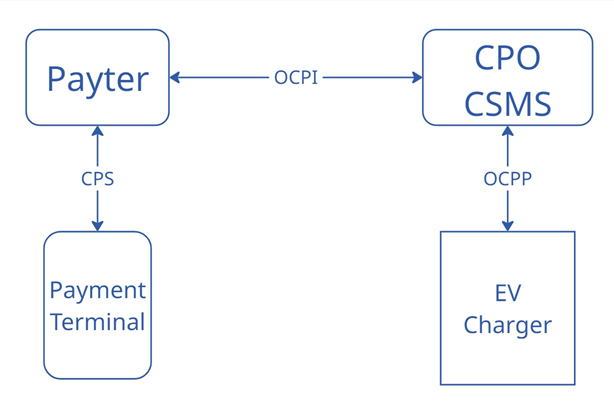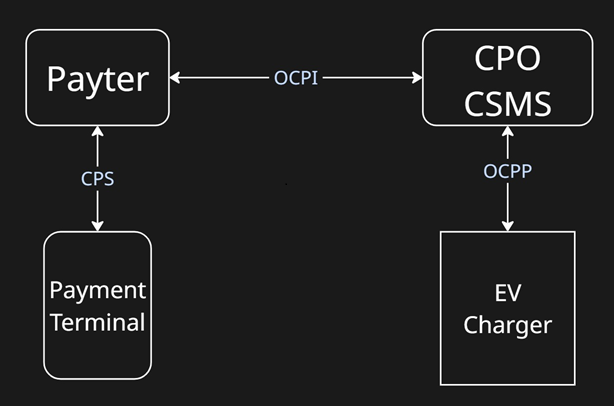What is OCPI?
The Open Charge Point Interface protocol (OCPI) supports connections between eMobility Service Providers (MSP) who have EV drivers as customers, and Charge Point Operators (CPO) who manage charge stations. This protocol is free to use and independent, and is maintained by the EV Roaming Foundation.
OCPI aims to:
- Accelerate the market for EV drivers
A mature EV market needs a single communication infrastructure where all market players in the EV and energy sector are connected. New, integrated and profitable business models can be developed that provide flexibility and assure continuity of supply.
- Improve mobility services
EV-drivers may expect to have an optimal user experience, regardless of borders, operators or equipment. Prices, tariffs, locations, availability and a single invoice should be available real-time in a transparent way.
The goals of OCPI are to simplify, standardize and harmonize.
Payter and OCPI
OCPI is modular, and in March 2024 the Payments module was added to version 2.2.1 of OCPI. This module introduced functionality that allowed a CPO and Payment Terminal Provider (PTP) such as Payter to use OCPI for direct payments. Payter adopted this specification in mid 2025, piloting the new OCPI product with a large CPO in west Europe.
The Payments module remains optional in version 2.3.0 of the OCPI specification, released in March 2025. Adopting this module and updating the CPO's solution to at least 2.2.1 means that the CPO can leverage an out of the box payment user flow and interactive messaging system without needing to add any non-OCPI code.


The diagram above shows the basic interaction between Payter as the Payment Terminal Provider and the CPO entity. This can be a Charge Station Management Software provider, a Charge Point Operator, or any variation of these. We detail the systems Payter use in the next page.